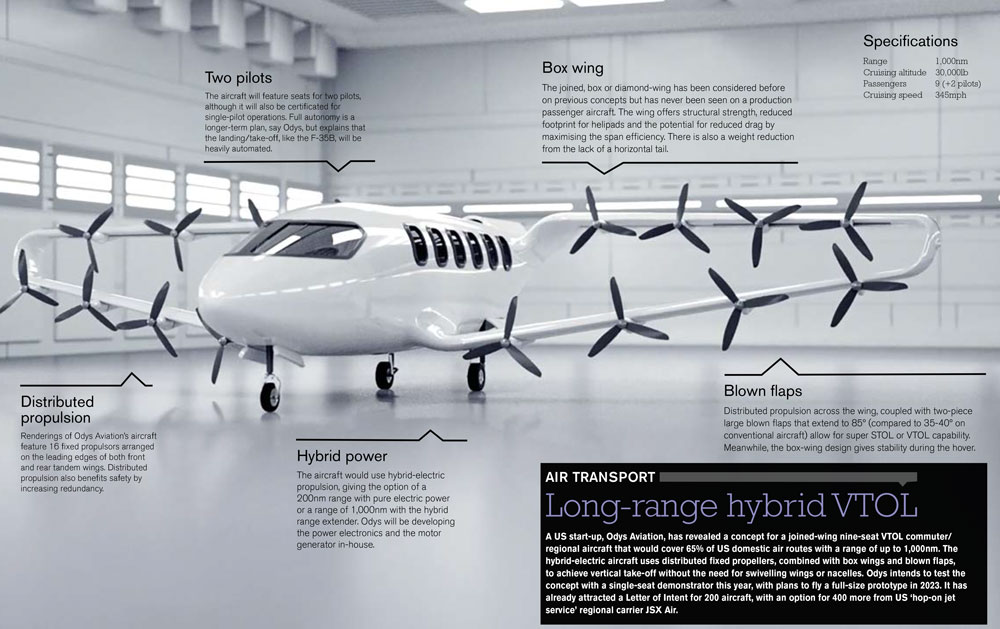Blueprint
Blueprint

A US start-up, Odys Aviation, has revealed a concept for a joined-wing nine-seat VTOL commuter/ regional aircraft that would cover 65% of US domestic air routes with a range of up to 1,000nm. The hybrid-electric aircraft uses distributed fixed propellers, combined with box wings and blown flaps, to achieve vertical take-off without the need for swivelling wings or nacelles. Odys intends to test the concept with a single-seat demonstrator this year, with plans to fly a full-size prototype in 2023. It has already attracted a Letter of Intent for 200 aircraft, with an option for 400 more from US ‘hop-on jet service’ regional carrier JSX Air.
Two pilots
The aircraft will feature seats for two pilots, although it will also be certificated for single-pilot operations. Full autonomy is a longer-term plan, say Odys, but explains that the landing/take-off, like the F-35B, will be heavily automated.
Distributed propulsion
Renderings of Odys Aviation’s aircraft feature 16 fixed propulsors arranged on the leading edges of both front and rear tandem wings. Distributed propulsion also benefits safety by increasing redundancy.
Hybrid power
The aircraft would use hybrid-electric propulsion, giving the option of a 200nm range with pure electric power or a range of 1,000nm with the hybrid range extender. Odys will be developing the power electronics and the motor-generator in-house.